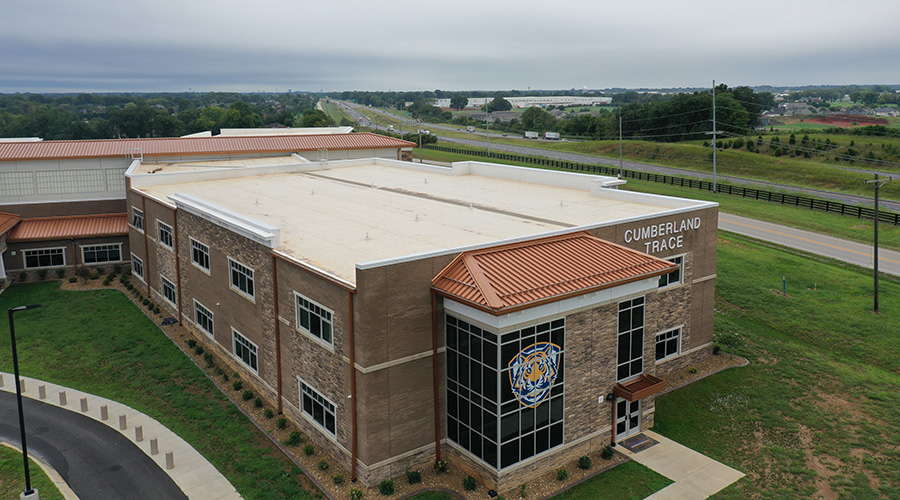« Back to Facilities Management News Home
« HVAC
Energy Logger Helps Identify HVAC System Inefficiencies
Air compressors are used in every industry in the world in many different ways, according to Jeff Yarnall, manager of auditing services for Rogers Machinery headquartered in Portland, Oregon. For example, air compressor systems stir the toothpaste, pack the paste into tubes, and then pack the tubes into retail boxes, into shipping boxes, and then load the boxes for transport.
“Even though it’s one of the most common manufacturing systems, compressed air is also an expensive one,” explained Yarnall. In a study, he found that the annual energy cost to run a one- horsepower air motor was $1,164 for a five-day workweek with two shifts, assuming a kWHr costs five (5) cents. In comparison, the cost for a one-horse power electric motor was $194 over the same time period. But despite the costs, air compressed power is still one of the most effective ways to move things through a manufacturing environment; so maximizing operating efficiency is critical.
This is where the ELITEpro XC Energy Logger comes in.
Air Compressors are often used to move product along the production process. But only 15% of the incoming energy to an air compressor is converted to useful energy, the balance (85%) turns into waste heat which must be dissipated. It gets worst, of the 15% up to half is lost due to leaks, artificial demand, or elevated pressure. Reducing these losses and using the waste heat for beneficial uses is a critical priority for Rogers Machinery customers and the auditing group
When Rogers Machinery first started using data loggers in audits in the late 1990s, it had three manufacturers to choose from. While each logger had its pros and cons, Yarnall found the early model ELITEpro from DENT Instruments to be the best for his applications.
“Utilities think in terms of measuring energy in 15 minute blocks,” he said. “But we think in terms of three to 15 seconds because compressed air demands are changing rapidly and we need to capture this data with a data logger capable of rapid sampling.”
The early model ELITEpro could measure energy in the time frame Yarnall needed. In addition, it didn’t have a display, which offered two advantages: a lower cost per unit and a direct stream of data into a computer system. Considering the large amount of data needed to audit a system, he found the data stream to be critical. Yarnall had made his decision.
Today, Roger’s Machinery auditing staff uses ELITEpro XCs routinely in their audits, collecting data at three second intervals reveals system performance (or lack of performance) clearly. The ELITEpro XC power meter can capture kWh/kW energy and demand data as well as virtually all relevant energy parameters for diagnostics and monitoring on three-phase or single-phase circuit installations. In addition to recording kWh/kW data, the ELITEpro XC electric data logger also features four analog input channels that can be configured for voltage (0-5vdc) or current (4-20mA) input used in any combination among channels. Analog inputs are especially helpful when used in conjunction with power measurements to correlate the consumption of electricity with process conditions related to air compressor systems.
And Yarnall only sees the demand for a tool like this growing when it is consider that industry in the United States consumes 935 billion kWHr annually, and gas compression consumes approximately a quarter of this energy. “The potential for savings is huge,” said Yarnall.
A key driver of this innovation is Variable Frequency Drives (VFDs) installed on compressor systems. “It is a game changer for the industry,” said Yarnall. The VFD system measures plant pressure in real time and adjusts the compressor automatically to meet demand. The system is so effective that utilities are creating incentives for companies to invest in them.
According to Yarnall, a VDF system can add 25 percent to the cost of an air compressing system. However, the company can recoup the cost within two years from energy savings alone. And how does Roger’s Machinery prove the savings? With a DENT ELITEPro XC.
“As experts, we ‘think’ we know what is going on with the system. With a little more data, we can ‘know’ what is going on with a system. With the DENT logger, we can “prove” what is going on. That proof validates the return on investment.”
In addition, Yarnall sees the need for “real time” loggers as manufacturing plants enter a modernization phase where “smart” tools will be the norm.
According to Yarnall, an audit currently takes about two to four weeks. Auditors download a huge volume of data, analyze it, and then return a report to the customer. “But what we’re hearing from customers is that they want to know in real time if a system is working efficiently or not. They want a report card at the end of every day so they can make adjustments, increasing efficiencies and reducing costs in real time.”
More From 8/3/2018 on FacilitiesNet







